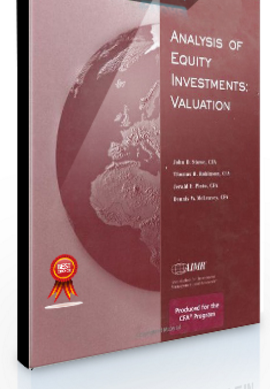Vip-Area
John D.Stowe – Analysis of Equity Investments Valuation

John D.Stowe – Analysis of Equity Investments Valuation
Price: $25
Please contact us: – Email: Tradersoffer@gmail -Skype: [email protected]
Visit checkout link: https://tradersoffer.forex/product/analysis-of-equity-investments-valuation-by-john-d-stowe/
The treatment in Analysis of Equity Investments: Valuation is intended to communicate a practical equity valuation process for the investment generalist. Unlike many alternative works, the book integrates accounting and finance concepts, providing the evenness of subject matter treatment, consistency of notation, and continuity of topic coverage so critical to the learning process. The book does not simply deliver a collection of valuation models, but challenges the reader to determine which models are most appropriate for specific companies and situations. This book contains many real-life worked examples and problems with complete solutions. In addition, the examples and problems reflect the global investment community.Chapter 1 describes how an analyst approaches the equity valuation process.
Chapter 2 begins with the basic John Burr Williams dividend discount model (DDM) and discusses the derivation of the required rate of return within the context of Markowitz and Sharpe’s modern portfolio theory (the capital asset pricing model).
Chapter 3 shows how the DDM approach can be modified to a free cash flow (FCF) approach. Considerable attention is devoted to forecasting FCF and its relationship both to the firm (FCFF) and to equity (FCFE).
Chapter 4 takes a somewhat different approach to equity valuation by using Graham and Dodd–type concepts of earning power and associated “Market Multiples.” The most familiar of these is probably the price-to-earnings ratio, but there is also merit to using price to book value, price to sales, price to cash flow, enterprise value to EBITDA, and price to dividends.
In Chapter 5, the authors present residual income models. The authors demonstrate how to calculate residual income and discuss the accounting adjustments necessary to estimate single-stage and multistage residual income valuation.

